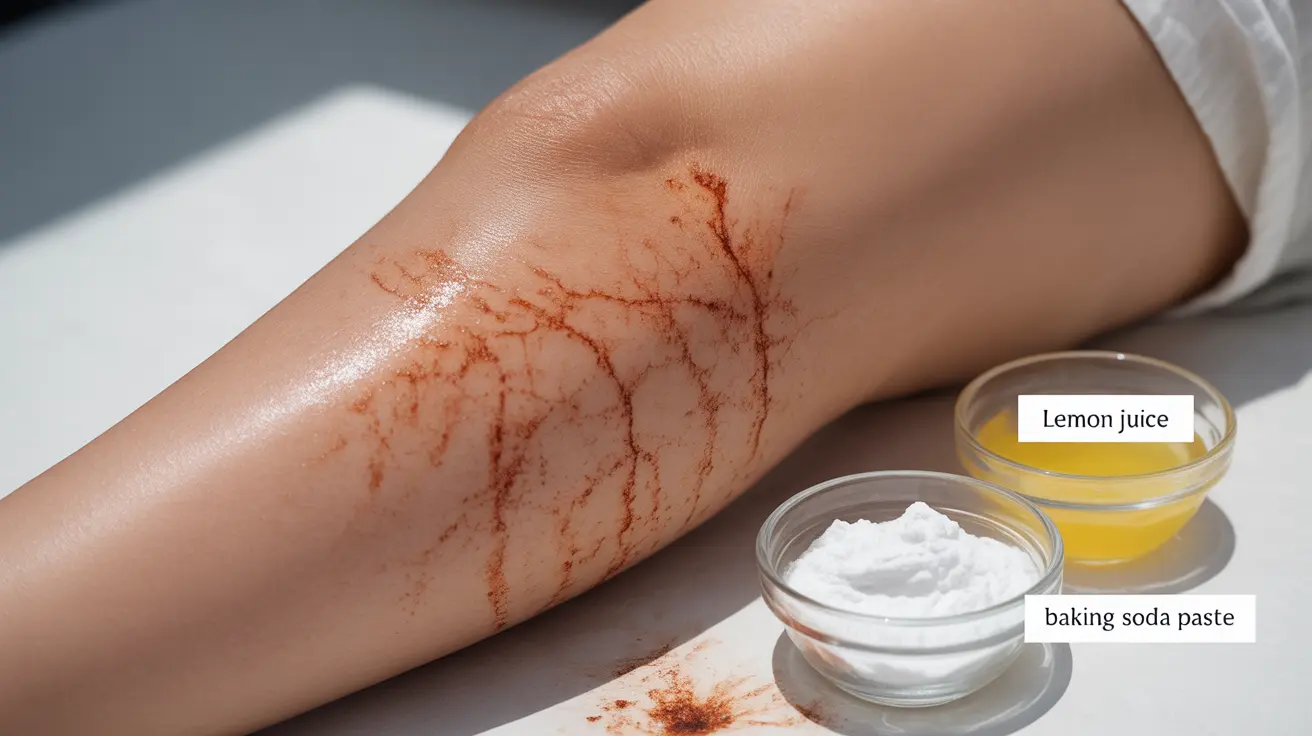When metal objects oxidize and form rust, this reddish-brown substance can transfer to your skin during contact. While rust stains on skin are common, especially among those who work with metal objects frequently, it's important to understand the implications and proper ways to handle this situation.
This comprehensive guide explores what causes rust marks on skin, potential health concerns, and safe removal methods. We'll also clarify common misconceptions about rust exposure and tetanus risk, helping you understand when medical attention might be necessary.
What Causes Rust Stains on Skin?
Rust forms when iron or iron-containing metals undergo oxidation through exposure to moisture and air. When your skin comes into contact with rusty surfaces, the iron oxide particles can transfer to your skin, leaving behind characteristic reddish-brown marks. These stains are particularly common in situations such as:
- Working with metal tools or equipment
- Handling rusty outdoor furniture
- Contact with old metal fixtures
- Exposure to rusty playground equipment
- Working on vehicles or machinery
Health and Safety Considerations
While rust stains themselves are generally harmless, understanding the potential health implications of rust exposure is crucial for proper safety measures.
Rust vs. Tetanus: Understanding the Connection
Contrary to popular belief, rust itself doesn't cause tetanus. Tetanus is caused by Clostridium tetani bacteria, which can be present in soil, dust, and animal feces. While rusty objects can harbor these bacteria, it's actually deep puncture wounds that create the oxygen-free environment where tetanus bacteria thrive.
When to Be Concerned
Pay attention to these situations that may require medical attention:
- Deep wounds from rusty objects
- Puncture injuries
- Cuts that show signs of infection
- Wounds with embedded rust particles
Safe Removal Methods for Rust Stains
There are several effective ways to remove rust stains from your skin without causing irritation:
Gentle Home Remedies
- Lemon juice application
- Baking soda paste
- Mild soap and warm water
- Salt and lime mixture
- Commercial rust removal products designed for skin
Always test these solutions on a small area first to ensure no skin sensitivity.
Prevention Tips
Taking preventive measures can help avoid rust stains on your skin:
- Wear protective gloves when handling rusty objects
- Keep metal items properly maintained and stored
- Apply protective coatings to metal surfaces
- Clean and dry metal tools after use
- Use rust-resistant materials when possible
Frequently Asked Questions
What causes rust stains to appear on the skin after touching rusty objects? Rust stains appear when iron oxide particles from oxidized metal transfer to your skin during contact. These particles adhere to the skin's surface, creating visible reddish-brown marks.
Can rust on the skin cause infections or tetanus? Rust itself doesn't cause infections or tetanus. However, deep wounds from rusty objects can create conditions where tetanus-causing bacteria might thrive. The bacteria, not the rust, cause tetanus.
How can I safely remove rust stains from my skin at home? You can safely remove rust stains using gentle methods like lemon juice, baking soda paste, or mild soap and warm water. Commercial rust removal products designed for skin use are also effective.
Does getting rust on the skin require medical treatment or tetanus vaccination? Simple rust stains on unbroken skin don't require medical treatment or tetanus vaccination. However, if you receive a deep wound from a rusty object, consult your healthcare provider about tetanus vaccination status.
When should I seek medical help for a wound caused by a rusty object? Seek medical attention if you have a deep puncture wound, signs of infection (redness, swelling, warmth, or pus), or if you're unsure about your tetanus vaccination status. Also consult a healthcare provider if rust particles are embedded in a wound.




